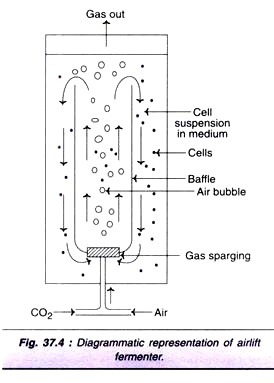ADVERTISEMENTS:
Read this article to learn about the reverse transcriptase: – process of making a double stranded DNA with diagrammatic representation.
The initial information came from study of tobacco mosaic virus (TMV) in virology that, only RNA can act as genetic material, can infect, can produce complete virus, and finally isolation of replicas.
This was followed by evidence for double stranded RNA by Weismann and August in 1968. Reverse transcription is the process of making a double stranded DNA (deoxyribonucleic acid) molecule from a single stranded RNA (ribonucleic acid) template. It is called reverse transcription as it acts in the opposite or reverse direction to transcription.
ADVERTISEMENTS:
This idea was very unpopular at first as it contradicted the central dogma of molecular biology which states that DNA is transcribed into RNA which is then translated into proteins. However, in 1970 when Mizutani and Howard Temin at Madison and David Baltimore at MIT, USA discovered the enzyme responsible for reverse transcription, named reverse transcriptase, the possibility that genetic information could be passed on in the reverse manner was finally accepted (Fig. 13.13).
Class VI viruses ssRNA-RT, also called the retroviruses are RNA reverse transcribing viruses with a DNA intermediate. Their genomes consist of two molecules of positive sense single stranded RNA with a 5′ cap and 3′ polyadenylated tail. Examples of retroviruses include Human Immunodeficiency Virus (HIV) and Human T-Lymphotropic virus (HTLV). Once the viruses have entered the cell and been uncoated the genome is reverse transcribed into double stranded DNA which can be incorporated into the host cell and subsequently expressed.
ADVERTISEMENTS:
Reverse transcription by the enzyme reverse transcriptase occurs in a series of steps:
1. A specific cellular tRNA acts as a primer and hybridizes to a complementary part of the virus genome called the primer binding site or PBS.
2. Complementary DNA then binds to the U5 (non-coding region) and R region (a direct repeat found at both ends of the RNA molecule) of the viral RNA.
3. A domain on the reverse transcriptase enzyme called RNAse H degrades the 5′ end of the RNA which removes the U5 and R region.
4. The primer then ‘jumps’ to the 3′ end of the viral genome and the newly synthesized DNA strands hybridizes to the complementary R region on the RNA.
5. The first strand of complementary DNA (cDNA) is extended and the majority of viral RNA is degraded by RNAse H.
6. Once the strand is completed, second strand synthesis is initiated from the viral RNA.
7. There is then another ‘jump’ where the PBS from the second strand hybridizes with the complementary PBS on the first strand.
8. Both strands are extended further and can be incorporated into the host’s genome by the enzyme integrase. DNA duplex so generated directs the remainder of the viral infection process (immediate lysis or integrate in to host genome and remains dormant) (Fig. 13.14).
Like other DNA and RNA polymerases, RT synthesizes polynucleotides in the 5′ to 3′ direction. Similar to DNA polymerase it requires a primer. Here, primer is a tRNA molecule captured by the virion from the host cell in which it was produced. 3′ end of the tRNA is base- paired with the viral template at the site where DNA synthesis initiates and its free 3′-OH accepts the deoxynucleotides.
This enzyme has three types of enzyme activities:
1. RNA-directed DNA polymerase, hence called RT.
2. RNAse H activity, degrade RNA in RNA-DNA hybrid.
ADVERTISEMENTS:
3. DNA-directed DNA polymerase.
The enzyme is a heterodimer consisting of 66kDa and 51kDa subunits.The two polypeptides have identical N-terminal sequences, indicating that the 51 kDa unit is cleaved from 66 kDa unit. The 66kDa monomer has identifiable ‘finger’, ‘palm’, and ‘thumb’ components which are functionally analogous to those in the Klenow fragment structure.
The interface of the 66 kDa and 51 kDa monomers provides a track from the polymerase active site to the RNaseH active site, and allow for the concomitant destruction of the RNA primer template strand directly after it has been copied (Fig. 13.15).
In a complex of RT with a double stranded DNA molecule, the DNA close to the polymerase active site is in the A-form, while the rest is in the normal B-form. The 51 kDa monomer may also provide a binding site for the lysine-tRNA that primes initial DNA synthesis. HIV RT is of great clinical significance because it is responsible for replication and infection of HIV. HIV RT produces error of incorporation mismatch base at a rate of 1 base /2000-4000 nucleotides polymerized. This means virus changes rapidly making vaccine development a difficult task.




